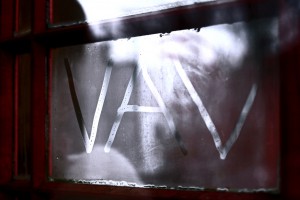“Scientific Method: Am I In Love?” and “Scientific Method: Noir Sestina”
 Editor’s note: Our objective is to determine whether the relationship between poetry and science is field-specific, or something. We hypothesize that a sentence will grow best when infected by the same ideas, images and methods that occur within either field. Preliminary results have been published in the Poetri Dish [experiments in verse] section of Poetry Northwest, Spring & Summer 2012 (v7.n1). Here, doctors Ink and Owning of Vis-à-Vis Society offer further findings:
Editor’s note: Our objective is to determine whether the relationship between poetry and science is field-specific, or something. We hypothesize that a sentence will grow best when infected by the same ideas, images and methods that occur within either field. Preliminary results have been published in the Poetri Dish [experiments in verse] section of Poetry Northwest, Spring & Summer 2012 (v7.n1). Here, doctors Ink and Owning of Vis-à-Vis Society offer further findings:
—
Scientific Method: Am I In Love?
Question: Am I in love?
Research: I sleep in a bed with another, I have held his breath in my mouth.
Hypothesis: If I run away, I will know.
Experiment: Fog up the window and see whose name your finger writes.
Observation: Made it all the way to Vancouver: wrote one name, smudged it out.
Results: It is true, the finger moves.
Report: Scientists in their lab coats leap to their feet in applause!
Scientific Method: Noir Sestina
From a broken phone booth she called our her question,
under-eye circles purple as bruises told of research
into nightmares and nights not sleeping. From this a hypothesis:
was anyone listening? The car crash experiment
resulting in two broken ribs and shattered glass; her analyst
asked questions, the police came and filed a report.
Flashing lights made their pulsing report.
Everybody’s eyebrows pursed liked parentheses around their questions;
open windows and closed shutters made their analysis.
Has anyone done a background check, researched
the sound a shattering life makes? Experiment
with the give of flesh, from fingerprints form a hypothesis
and blue inked flowers—a bruised hypothesis
splattered like a busted pen all over her report.
After a crash the first breath is an experiment
and every exhale questions
the body against the air. Sad research
listless as a dim flashlight in the night fog obscuring analysis.
Explain pain and dreams on scale of 1 to 10, analysis
withheld, like artificial respiration. Breathe a hypothesis
if you’re not sure where to start. Later research
captured obscenities which cannot be written in this report.
She applies make-up in the reflection of her question,
even her eye shadow smacks of experiment.
Her 20s were an experiment.
In her 30s she fell under the spell of a her current analyst,
a devastation of questions answered with questions.
You’d think for $150 an hour, the shrink could’ve formed a hypothesis
better than a 3-page prescription report.
Her 40s will feature a decline in libido, according to research.
Thank you for taking part in our research.
She feels the scientific community’s gratitude in the thin hospital gown
she dons for the experiment.
Like a half-hoped for valentine, she awaits the report
she can read for herself: she needs no analysis.
She touches her finger to the graph, presses pulse to hypothesis.
The blood spatter begs the question.
Naked beneath her research she runs out into the night’s analysis.
The fist-through-glass experiment proved true her hypothesis:
that the heart’s report destroys without question.
—
 Vis-à-Vis Society was founded by poet-scientists Dr. Ink (a.k.a. Sierra Nelson) and Dr. Owning (Rachel Kessler). Their books of collaborative poetry include Desire & Flotation Devices and Who Are We?, and they have performed across the nation. Visit www.facebook.com/VisaVisSociety.
Vis-à-Vis Society was founded by poet-scientists Dr. Ink (a.k.a. Sierra Nelson) and Dr. Owning (Rachel Kessler). Their books of collaborative poetry include Desire & Flotation Devices and Who Are We?, and they have performed across the nation. Visit www.facebook.com/VisaVisSociety.
—
all photos: Rebecca Hoogs
